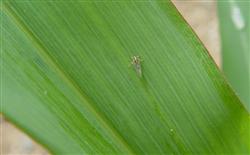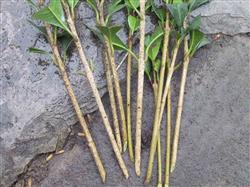How does acephate work?

How does acephate work? Please introduce the characteristics of acephate as an internal inhalation insecticide, which has stomach toxicity and contact effect, and can kill eggs and fumigation to a certain extent. it is a slow-acting insecticide, which has synergism and lasting effect if mixed with carbaryl, dimethoate and other pesticides. The scope of application is suitable for vegetables, tea trees, tobacco, fruit trees, cotton, rice, wheat, rape and other crops, to control a variety of chewing and piercing mouthparts pests and harmful mites. Use method 1. Vegetable pest control (l) control of cotton bollworm, cotton red spider ball, tobacco green worm, night moth, yellow striped jumping beetle, etc. Spray with 30% or 40% EC 500-800 times. (2) to control Pieris rapae, about 1 week after the peak of adult oviposition, spray with 80-1000 times of 40% EC. Control of Plutella xylostella and Spodoptera litura, spray concentration is the same as above. (3) to control Chilo suppressalis, Chilo suppressalis, vegetable aphid and melon aphid, spray 1000-1500 times of 40% EC. (4) to control greenhouse whitefly, 40% EC spray is used to control nymphs and adults (basically ineffective to eggs and pupae), once every 5-6 days. Continuous prevention and treatment for 2-3 times. two。 Pest control of rice leaf borer, Chilo suppressalis medinalis, using 30% EC 125 muri 225 ml per mu, spraying 75 kg of water 60 muri. Rice planthopper uses 30% EC 80-150 ml per mu and sprays 75 kg of water. 3. Cotton pest control cotton aphid uses 30% EC 100MUE 150ml per mu and sprays 75kg of water 50MUE. Helicoverpa armigera mainly controls the second and third generations of larvae in cotton fields. The suitable period for control of Helicoverpa armigera is the peak period of moth and spawning of each generation of Helicoverpa armigera. Its dosage is 30% EC 150m / mu 200ml, constant spray of 75MU / mu and 100kg of water. 4. Control of fruit tree pests peach heart borer and pear heart borer control during the peak period of adult spawning, 30% EC is used to spray water 500-750 times evenly. The control effect of citrus shell insects was the best in the 1st instar nymph stage, which was evenly sprayed with 300-600 times of 30% EC. 5. The prevention and control of corn and wheat armyworm can be sprayed with 120-240 ml of 30% EC per mu before the 3rd instar larvae. 6. Tobacco pest control and control of tobacco green insects, in the stage of 3rd instar larvae, use 30% EC 100MUE 200ml per mu and spray 50Mel 100kg of water. Note 1. Cannot be mixed with alkaline substances. two。 It is not suitable for use on mulberry and tea trees. 3. This product is flammable, pay attention to fire prevention in the process of transportation and storage, stay away from the source of fire. 4. The poisoning symptoms are typical organophosphorus poisoning symptoms, but the duration of the disease is longer and the recovery of cholinesterase is slow. Detoxification with atropine or antidote should be symptomatic and pay attention to prevent brain edema. 5. Kidney beans are sensitive to acephate and should not be used. 6. This product is flammable and should be kept away from the source of fire during transportation and storage and pay attention to fire prevention. 7. If crystal precipitation is found, shake the bottle and soak the bottle in hot water until dissolved before use. 8. The aqueous solution of this product can be absorbed by the human body through the skin. Be careful not to pollute the skin when using it. Click to get more pesticide application techniques
- Prev

What kind of medicine is used to beat the gray planthopper at the panicle stage of rice?
What kind of medicine is used to beat the gray planthopper at the panicle stage of rice? Please introduce rice gray planthopper at panicle stage, please refer to the following drugs: grey planthopper can not only transmit virus and cause virus diseases such as rice stripe blight, but also concentrate on panicle damage in late rice panicle stage. The experiment was conducted with 40% chlorpyrifos EC 100 ml and 10% enamiprid 3 per mu.
- Next

How do camellias grow?
How do camellias grow? Camellia is one of China's top ten traditional flowers, sexual love warm environment, growth temperature is 18-25 degrees, like in the semi-shade, air humidity environment and in the deep summer, fertile, loose, well-drained soil growth, bogey sun, bogey dry. Cutting...
Related
- Fuxing push coffee new agricultural production and marketing class: lack of small-scale processing plants
- Jujube rice field leisure farm deep ploughing Yilan for five years to create a space for organic food and play
- Nongyu Farm-A trial of organic papaya for brave women with advanced technology
- Four points for attention in the prevention and control of diseases and insect pests of edible fungi
- How to add nutrient solution to Edible Fungi
- Is there any good way to control edible fungus mites?
- Open Inoculation Technology of Edible Fungi
- Is there any clever way to use fertilizer for edible fungus in winter?
- What agents are used to kill the pathogens of edible fungi in the mushroom shed?
- Rapid drying of Edible Fungi

